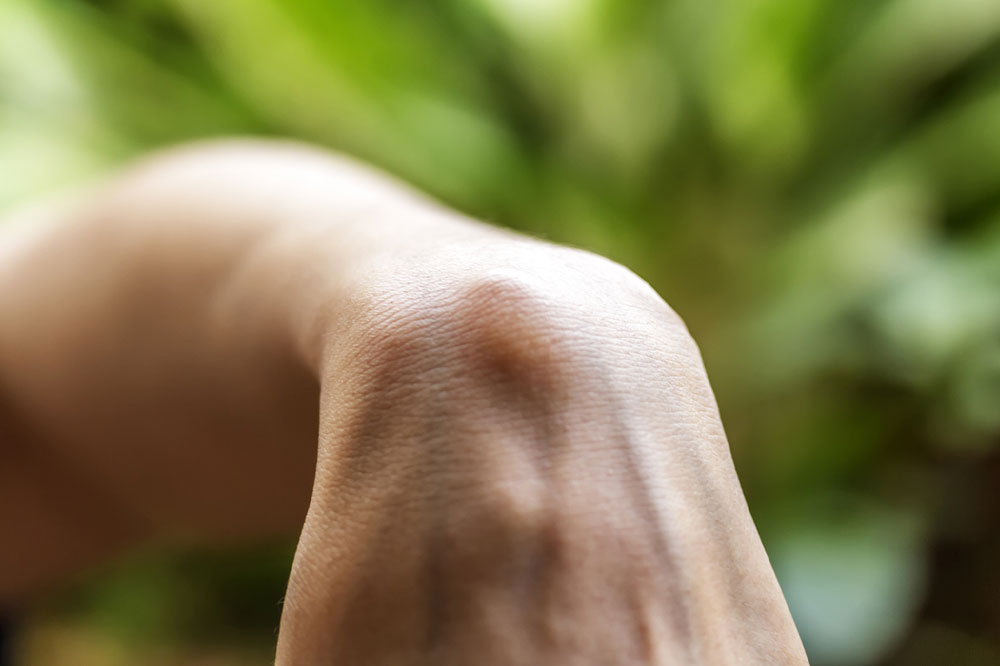
Bible cyst and its associated factors
A ganglion or bible cyst is a small fluid sac that develops over a tendon or joint that connects muscle to the bone. The cyst has a transparent, sticky, thick, jellylike, colorless material. Depending on the cyst size, it may feel spongy or firm. Typically, the bible cyst grows at the back of the hand on the wrist joint and may develop on the wrist’s palm side. Let’s know about its symptoms, causes, and remedies.
Symptoms
Some people may have a bible cyst but never get any symptoms. However, others experience some symptoms, such as a visible mass or lump on the foot, ankle, hand, or wrist. You may feel pain or discomfort if the cyst is on the ankle or foot, especially when wearing shoes or walking. When the cyst develops near a nerve, it may lead to signs like pain, numbness, tingling sensation, and loss of mobility. Some of the cysts may get smaller or bigger over time.
Causes
Sadly, nobody knows what causes the bible cyst. It grows on the tendon’s lining or out of a joint and shows like a small water balloon on the stalk. Inside the cyst is a thick fluid-like substance around the tendons or in the joints. Some factors that aggravate your possibility of developing the bible cyst are:
Tendon or joint injury
Injured tendons or joints are susceptible to developing ganglion cysts.
Osteoarthritis
People with osteoarthritis are susceptible to developing bible cysts near the joints.
Age and sex
Even though bible cysts may happen to anyone, they are more prevalent in women between 20 and 40.
Diagnosis
Doctors examine the lump and then ask about the medical history and the cyst’s duration. Further, they will also discuss your symptoms. After this, they may order imaging tests like MRI, ultrasound, or X-ray, especially if they cannot see the cyst. In addition, they will employ transillumination, a process of shining light across the affected body area to evaluate abnormalities that can also help assess the differences between a solid tumor and one filled with a liquid like a Bible cyst. In addition, the doctor may also take the fluid sample for further examination.
Treatment options
The bible cyst does not require treatment if it causes no pain or discomfort. In some people, the cysts might go away sans any intervention, but some might take many years to resolve fully. A doctor will advise some treatment if the cyst starts pressing onto the nerve and induces pain.
If the cyst is painful and large or causes some problems, the doctor may advise removing it via one of the following techniques:
- Aspiration requires removing the fluid from the cyst, but the underlying structure stays intact. In this case, the cyst may develop again, and you may need repeat procedures.
- Surgery – The doctor makes a small incision to remove the stalk and the cyst. Arthroscopic or Keyhole surgery can be a good alternative.
Recovery tips
After surgery, you must cover the area and ensure it does not experience any accidental bumping. Other recovery tips include:
- Increasing the extremity to lower the swelling risk
- Using an over-the-counter pain relief option, if needed
- Wearing a splint for some days if the cyst is on the wrist or hand
- Following the aftercare recommendations stated by your doctor
You must see a doctor if the discomfort continues.
Tips and home remedies
When your bible cyst causes any discomfort, you can consider the following tips and home remedies:
Pain relief
A painkiller prescription can be beneficial for temporary relief.
Immobilization
Moving the infected area a lot can amplify the cyst size. A brace or splint can help curtail the movement and reduce the cyst size.
Adaptive footwear
When the cyst is on the ankle or foot, pick shoes that do not irritate or rub it. So, opt for open or soft shoes, lace the shoes differently, or insert padding.




